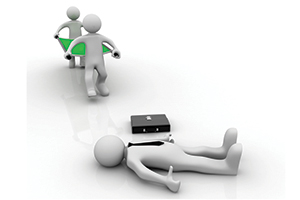First Aid: To train or not to train?
 Since October 2013 the HSE is no longer required to approve first aid trainers. This raises some questions and uncertainties about how suitable first aid training is achieved. Employers still have the choice of utilising an existing training provider, provided the training is fit for purpose. A second alternative is to conduct the training in-house.
Since October 2013 the HSE is no longer required to approve first aid trainers. This raises some questions and uncertainties about how suitable first aid training is achieved. Employers still have the choice of utilising an existing training provider, provided the training is fit for purpose. A second alternative is to conduct the training in-house.
In-house training?
The HSE “does not advocate, promote or support any particular option” for first-aid training delivery but, to comply with legal duties the choice must be appropriate and adequate, based on a needs assessment and appropriate with due diligence being conducted.
If an employer decides to provide first-aid training in-house it will need to make sure that the first-aid training is fit for purpose. The content should reflect the content of the First Aid at Work (FAW) or Emergency First Aid at Work qualifications detailed in guidance document L74, First Aid at Work – The Health and Safety (First-Aid) Regulations 1981. Guidance on Regulation, and the training should be delivered in accordance with currently accepted standards for first aid.
HSE’s General Information Sheet Selecting a First-aid Training Provider (GEIS3), also notes that in-house individuals acting as trainers or assessors “should have the necessary skills, qualifications and competencies expected of those working for an external training provider”.
GEIS3 notes that the competencies trainers and assessors should possess are knowledge and competence in first aid, as demonstrated by a current, valid FAW certificate or by being registered and licensed as a doctor, nurse or paramedic. They should also have knowledge and competence in training and/or assessing, demonstrated by holding appropriate training and/or assessing qualification as detailed in GEIS3.
Guidance recommends that “a system of quality assurance should be in place ensuring that the competence of trainers/assessors is regularly reviewed by competent verifiers” and that a course evaluation procedure is in place. The system should include designating an individual to take responsibility for quality assurance, including assessment of the skills of trainers/assessors at least annually.
This “designated person”, can be from inside or outside the organisation, should be independent of training delivery and should be able to demonstrate competence for their role.
The designated person, as well as meeting the same criteria as a trainer (e.g. they should be FAW qualified), should have knowledge and competence in assessing and verifying qualifications. This can be demonstrated by holding a qualification such as one of those listed in GEIS3.
In addition to the above, courses must meet the following criteria:
- Class sizes should be appropriate and take account of the needs and capabilities of those undertaking any training
- Certificates issued should contain information in accordance with HSE guidance
- Equipment provided should be suitable and sufficient, as detailed in guidance
- Training should consist of sufficient, minimum contact training time as detailed in guidance.
Who to train?

Clearly, being a first-aider entails making a commitment to providing an important and potentially life-saving response. To do so, the individual should be able to:
- Assess a situation quickly and safely and summon appropriate help
- Identify, as far as possible, the injury or the nature of the illness affecting a casualty
- Give early, appropriate, and adequate treatment in a sensible order of priority
- Arrange for the removal of the casualty to hospital, to the care of a doctor
- Remain with the casualty until handing them over to the care of an appropriate person.
To achieve this, a number of factors must be considered. According to L74 First Aid at Work. The Health and Safety (First-Aid) Regulations 1981. Approved Code of Practice and Guidance, these will include the individual’s:
- Reliability, disposition and communication skills
- Aptitude and ability to absorb new knowledge and learn new skills
- Ability to cope with stressful and physically demanding emergency procedures
- Normal duties, which they should be able to leave immediately and rapidly to attend an emergency.
Other factors to consider include the location of any would-be first-aid staff on the premises and their times of attendance on the premises. It should also be borne in mind that first-aid personnel may have to carry out other duties, including the preparation of a report on any incident and any treatment administered, and assisting in any subsequent investigation.
They may also have to regularly check first-aid equipment to ensure that the contents of boxes and facilities in first-aid rooms comply with the requirements of the regulations. Such responsibilities will require a time commitment and a person selected for training and given these additional responsibilities must have the approval of their line manager to ensure that there is no conflict of interests.
You can find more information about this topic in our guide to first aid in the office.
